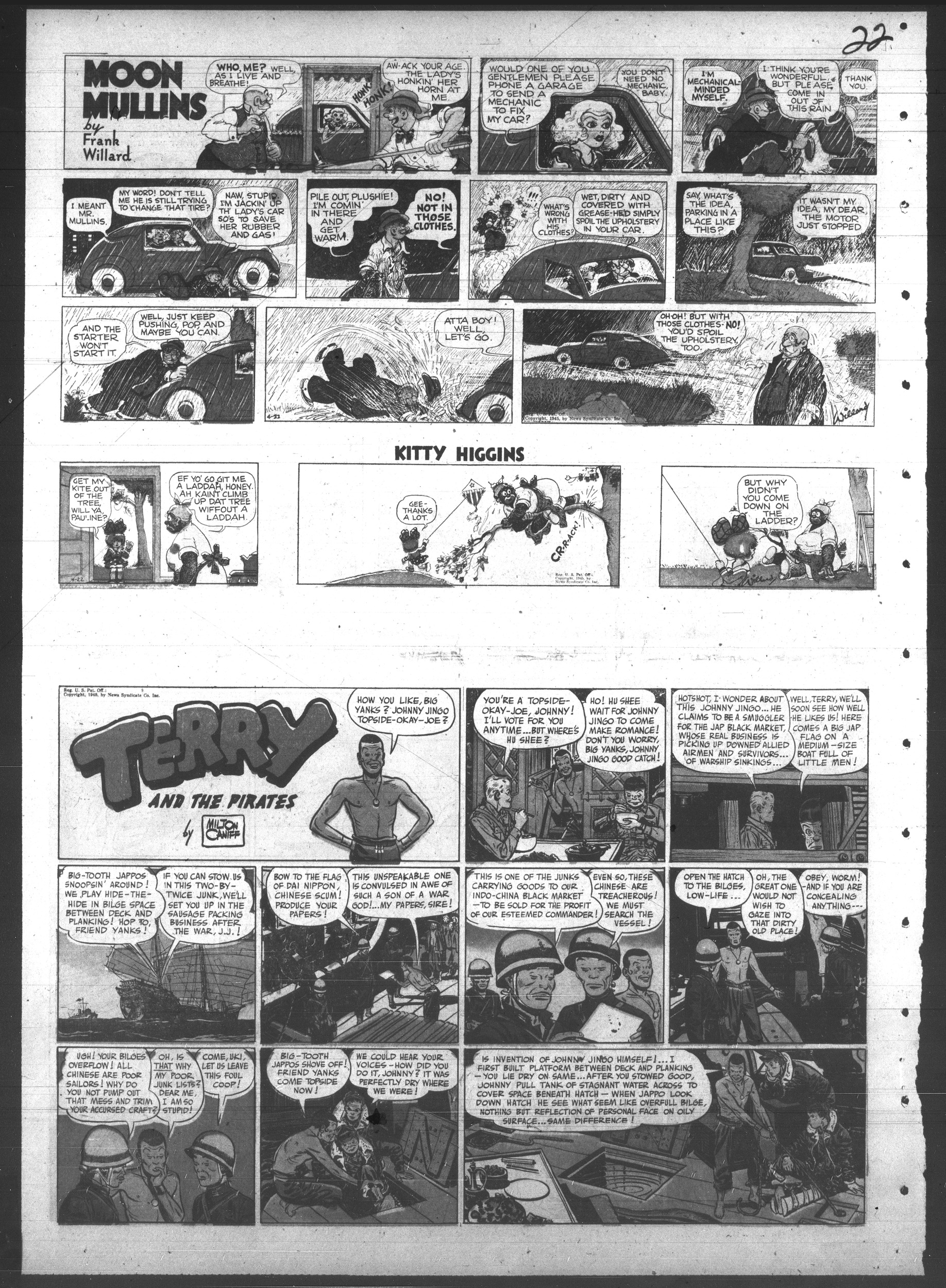Search the Special Collections and Archives Portal
Search Results
Las Vegas Israelite of Nevada, Vol. 24, No. 2 (1988-01-22), page 22
Copyright & Fair-use Agreement
UNLV Special Collections provides copies of materials to facilitate private study, scholarship, or research. Material not in the public domain may be used according to fair use of copyrighted materials as defined by copyright law. Please cite us.
Please note that UNLV may not own the copyright to these materials and cannot provide permission to publish or distribute materials when UNLV is not the copyright holder. The user is solely responsible for determining the copyright status of materials and obtaining permission to use material from the copyright holder and for determining whether any permissions relating to any other rights are necessary for the intended use, and for obtaining all required permissions beyond that allowed by fair use.
Read more about our reproduction and use policy.
I agree.Page
Digital ID
Las Vegas Israelite of Nevada, Vol. 21, No. 4 (1985-02-22), page 22
Copyright & Fair-use Agreement
UNLV Special Collections provides copies of materials to facilitate private study, scholarship, or research. Material not in the public domain may be used according to fair use of copyrighted materials as defined by copyright law. Please cite us.
Please note that UNLV may not own the copyright to these materials and cannot provide permission to publish or distribute materials when UNLV is not the copyright holder. The user is solely responsible for determining the copyright status of materials and obtaining permission to use material from the copyright holder and for determining whether any permissions relating to any other rights are necessary for the intended use, and for obtaining all required permissions beyond that allowed by fair use.
Read more about our reproduction and use policy.
I agree.Page
Digital ID
Las Vegas Israelite of Nevada, Vol. 21, No. 6 (1985-03-22), page 22
Copyright & Fair-use Agreement
UNLV Special Collections provides copies of materials to facilitate private study, scholarship, or research. Material not in the public domain may be used according to fair use of copyrighted materials as defined by copyright law. Please cite us.
Please note that UNLV may not own the copyright to these materials and cannot provide permission to publish or distribute materials when UNLV is not the copyright holder. The user is solely responsible for determining the copyright status of materials and obtaining permission to use material from the copyright holder and for determining whether any permissions relating to any other rights are necessary for the intended use, and for obtaining all required permissions beyond that allowed by fair use.
Read more about our reproduction and use policy.
I agree.Page
Digital ID
Daniel Romano oral history interview
Identifier
Abstract
Oral history interview with Daniel Romano conducted by Claytee D. White on December 10, 2018 for the Boyer Early Las Vegas Oral History Project. In this interview, Romano discusses his early life Walnut, California. He talks about his father’s water ski business, moving to Boulder City, Nevada, and attending dinner shows in Las Vegas. Romano recalls his involvement with The Neon Museum, copyright issues with the signs, and the growth of the museum. Lastly, Romano discusses the history behind one of his homes.
Archival Collection
Michael Bryant oral history interview
Identifier
Abstract
Oral history interview with Michael Bryant conducted by Claytee D. White on August 05, 2013 for the African Americans in Las Vegas: a Collaborative Oral History Project. In this interview, Bryant details life in the Westside community of Las Vegas, Nevada, his personal history, and life as an African American in Las Vegas. He describes his upbringing in Las Vegas, his father's high-end clothing store, and race relations between the African American and white communities of the city. Bryant also discusses casinos and other Las Vegas attractions, such as the presence of famous celebrities like Frank Sinatra and Muhammad Ali, as well as discussing the development of the Westside community. Julia Walton was also present for this interview.
Archival Collection
Eldon G. Cooper oral history interview
Identifier
Abstract
Oral history interview with Eldon G. Cooper conducted by Kamal Wilhelm on March 03, 1975 for the Ralph Roske Oral History Project on Early Las Vegas. Cooper first talks about his background and his eventual move to Las Vegas, Nevada before describing the recreational activities in which he and his family participated. He later describes the atomic testing, environmental changes, modes of transportation, social changes, and tourism in Las Vegas.
Archival Collection
Richard Plaster oral history interview
Identifier
Abstract
Oral history interview with Richard Plaster conducted by Claytee D. White and Stefani Evans on March 21, 2017 for the Building Las Vegas Oral History Project. In this interview, Plaster discusses his early life in Santa Monica, California, and moving to Las Vegas, Nevada in 1973. He recalls his early interests in real estate, forming his company Signature Homes, and the first home building projects he was involved in. Lastly, Plaster describes land acquisition during the late 1970s, building mass housing, and his role as President of the Southern Nevada Home Builders Association (SNHBA).
Archival Collection
Richard A. Leigon oral history interview
Identifier
Abstract
Oral history interview with Richard A. Leigon conducted by Claytee D. White and Stefani Evans on January 12, 2017 for the Building Las Vegas Oral History Project. Leigon discusses John S. Park Elementary School, John C. Fremont Junior High School, and Boy Scout Troop 69 at Griffith Methodist Church. Leigon also discusses his father’s, Ralph A. Leigon, contributions to Las Vegas, Nevada, the International Brotherhood of Electrical Workers (IBEW), the American Federation of Labor and Congress of Industrial Organizations (AFL-CIO), and his own lengthy career with IBEW that bridged labor management.
Archival Collection

